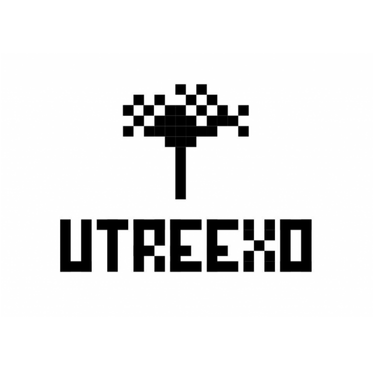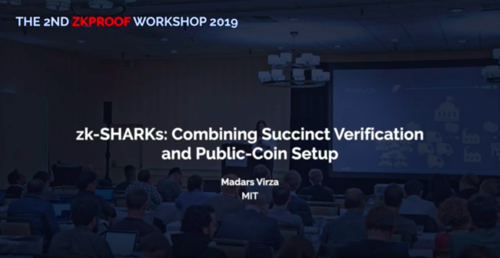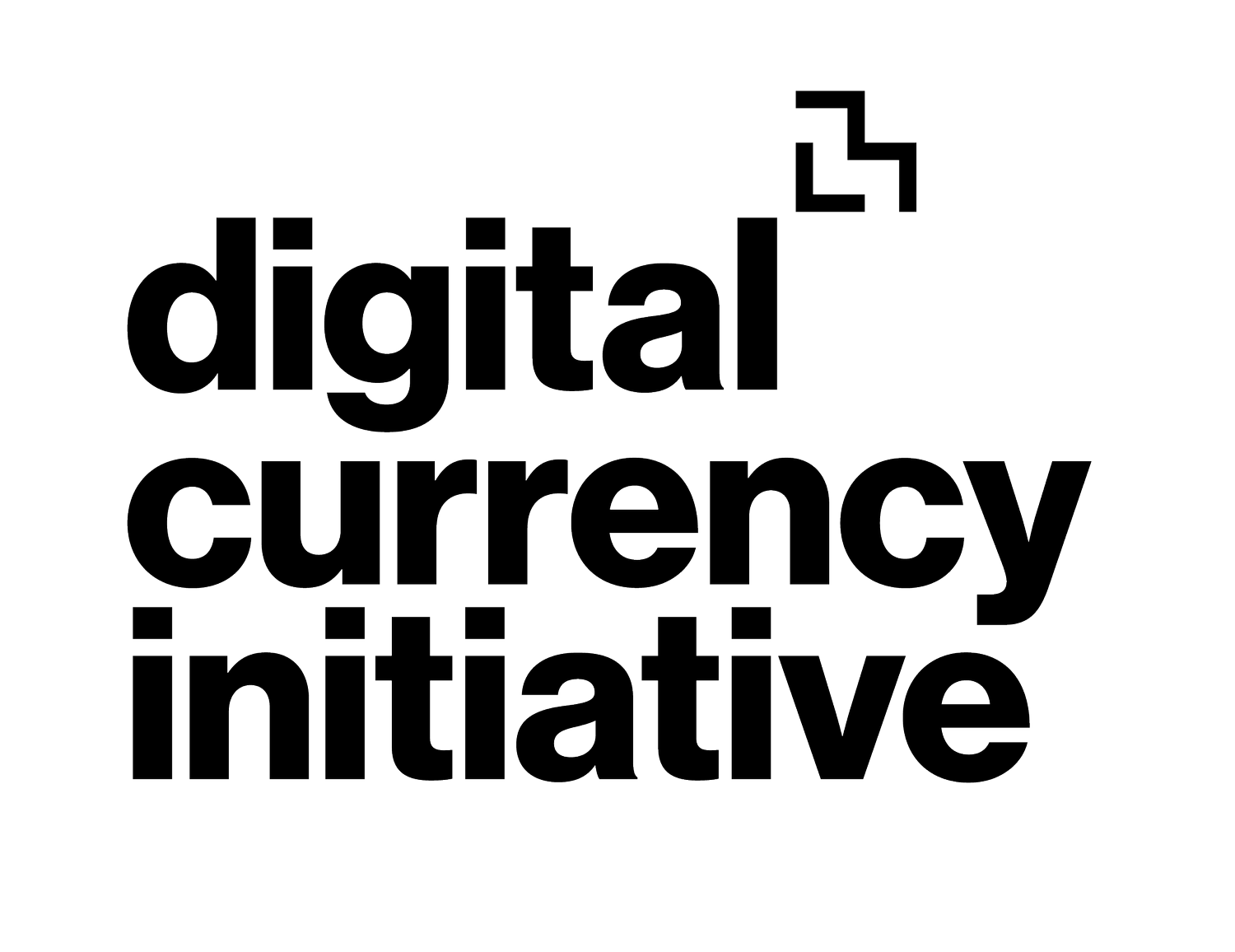'Data Structures Meet Cryptography: 3SUM with Preprocessing' by DCI's Sunoo Park et al.
Abstract
This paper shows several connections between data structure problems and cryptography against preprocessing attacks. Our results span data structure upper bounds, cryptographic applications, and data structure lower bounds, as summarized next.
'Privacy-preserving analytics for the securitization market: a zero-knowledge distributed ledger technology application' By DCI Collaborator Sophie Meralli
Abstract
A zero-knowledge proof or protocol is a cryptographic technique for verifying private data without revealing it in its clear form. In this paper, we evaluate the potential for zero-knowledge distributed ledger technology to alleviate asymmetry of information in the asset-backed securitization market. To frame this inquiry, we conducted market data analyses, a review of prior literature, stakeholder interviews with investors, originators and security issuers and collaboration with blockchain engineers and researchers. We introduce a new system which could enable all market participants in the securitization lifecycle (e.g. investors, rating agencies, regulators and security issuers) to interact on a unique decentralized platform while maintaining the privacy of loan-level data, therefore providing the industry with timely analytics and performance data. Our platform is powered by zkLedger (Narula et al. 2018), a zero-knowledge protocol developed by the MIT Media Lab and the first system that enables participants of a distributed ledger to run publicly verifiable analytics on masked data
'Redesigning digital money: What can we learn from a decade of cryptocurrencies?' by Robleh Ali and Neha Narula of the Digital Currency Initiative
Introduction
In a 2019 speech, Bank of England governor Mark Carney said that “Technology has the potential to disrupt the network externalities that prevent the incumbent global reserve currency from being displaced.” Certainly one of the most interesting places where technology is disrupting payments and finance is in cryptocurrencies. Cryptocurrencies have emerged from open source development communities in large part because electronic transaction systems are too expensive and they have not evolved fast enough to keep pace with the demand for retail online digital payments and more sophisticated types of financial transactions. The wide variety of experimentation in cryptocurrencies is causing technologists and central bankers to rethink the interface to money and explore a digital form which can be held by users and companies directly. This could lead to a financial system with a simplified institutional structure, capable of serving the public at a much lower cost. Though there has been much discussion about the policy design for central bank-issued digital currency (CBDC), there are important technical points missing from the conversation: CBDC should not be a direct copy of existing cryptocurrencies with exactly the same design and features but there are things we can learn from their emergence - the usefulness of programmability in money and the importance of preserving user privacy.

Take the free MIT Open Course taught by DCI's Neha Narula and Tadge Dryja "MAS.S62: Cryptocurrency Engineering and Design"
Course Description
Bitcoin and other cryptographic currencies have gained attention over the years as the systems continue to evolve. This course looks at the design of Bitcoin and other cryptocurrencies and how they function in practice, focusing on cryptography, game theory, and network architecture. Future developments in smart contracts and privacy will be covered as well. Programming assignments in the course will give practical experience interacting with these currencies, so some programming experience is required. Course taught by Tadge Dryja and Neha Narula.

'Examining Facebook’s Proposed Cryptocurrency and Its Impact on Consumers, Investors, and the American Financial System' - Final Testimony by DCI's Gary Gensler
DCI Senior Advisor Gary Gensler’s Final Testimony on ‘Examining Facebook’s Proposed Cryptocurrency and Its Impact on Consumers, Investors, and the American Financial System’. Presented during the ‘Financial Services Committee’ at the United States House of Representatives on July 17, 2019.

Utreexo: A dynamic hash-based accumulator optimized for the Bitcoin UTXO set
by Thaddeus Dryja (MIT’s Digital Currency Initiative)
Abstract: In the Bitcoin consensus network, all nodes come to agreement on the set of Unspent Transaction Outputs (The “UTXO” set). The size of this shared state is a scalability constraint for the network, as the size of the set expands as more users join the system, increasing resource requirements of all nodes. Decoupling the network’s state size from the storage requirements of individual machines would reduce hardware requirements of validating nodes. We introduce a hash based accumulator to locally represent the UTXO set, which is logarithmic in the size of the full set. Nodes attach and propagate inclusion proofs to the inputs of transactions, which along with the accumulator state, give all the information needed to validate a transaction. While the size of the inclusion proofs results in an increase in network traffic, these proofs can be discarded after verification, and aggregation methods can reduce their size to a manageable level of overhead. In our simulations of downloading Bitcoin’s blockchain up to early 2019 with 500MB of RAM allocated for caching, the proofs only add approximately 25% to the amount otherwise downloaded.
It wasn't me! Repudiability and (Un)claimability of Ring Signatures
by Sunoo Park (MIT Media Lab) and Adam Sealfon (MIT CSAIL)
To appear in the International Cryptology Conference (CRYPTO 2019).

DCI's Madars Virza presents: zk-SHARKs: Combining Succinct Verification and Public Coin Setup at ZKPROOF Workshop
‘zk-SHARKs: Combining Succinct Verification and Public Coin Setup’ by Madars Virza (MIT DCI)
Madars presents at ZKPROOF Workshop on his project zk-SHARKS.
Cryptanalysis of Curl-P and Other Attacks on the IOTA Cryptocurrency
By Ethan Heilman (Boston Uni), Neha Narula (MIT Media Lab), Garrett Tanzer (Harvard), James Lovejoy (MIT Media Lab), Michael Colavita (Harvard), Madars Virza (MIT Media Lab), and Tadge Dryja (MIT Media Lab)
We present attacks on the cryptography formerly used in the IOTA blockchain, including under certain conditions the ability to forge signatures. We developed practical attacks on IOTA’s cryptographic hash function Curl-P-27, allowing us to quickly generate short colliding messages. These collisions work even for messages of the same length. Exploiting these weaknesses in Curl-P-27, we broke the EU-CMA security of the former IOTA Signature Scheme (ISS). Finally, we show that in a chosen-message setting we could forge signatures and multi-signatures of valid spending transactions (called bundles in IOTA).
Blockchain and the Value of Operational Transparency for Supply Chain Finance
by Jiri Chod (BU), Nikolaos Trikakis (MIT), Gerry Tsoukalas (Upenn Wharton), Henry Aspegren (MIT), and Mark Weber (MIT). Nominated for an award in the Journal of Management Science. Sept 15th, 2018
In this paper, we develop a new theory that shows signaling a firm's fundamental quality (e.g., its operational capabilities) to lenders through inventory transactions to be more efficient --- it leads to less costly operational distortions --- than signaling through loan requests, and we characterize how the efficiency gains depend on firm operational characteristics such as operating costs, market size, inventory salvage value and failure probability.
SpaceMint: A Cryptocurrency Based on Proofs of Space
By Sunoo Park, Albert Kwon, Georg Fuchsbauer, Peter Gaži, Joël Alwen, and Krzysztof Pietrzak. Published in the 22nd International Conference on Financial Cryptography and Data Security (Financial Crypto 2018)
Practical Accountability of Secret Processes
By Jonathan Frankle, Sunoo Park, Daniel Shaar, Shafi Goldwasser, and Daniel J. Weitzner. Published in the 27th USENIX Security Symposium (USENIX Security 2018).
Compelled Decryption and the Fifth Amendment: Exploring the Technical Boundaries
By Aloni Cohen and Sunoo Park. Published in the Harvard Journal of Law and Technology (JOLT), Fall 2018 issue.
How to Subvert Backdoored Encryption: Security Against Adversaries that Decrypt
By Thibaut Horel, Sunoo Park, Silas Richelson, and Vinod Vaikuntanathan. Published in the Innovations in Theoretical Computer Science conference (ITCS 2019).
"DCI Working Groups: the blockchain sandbox at MIT" On Medium by DCI's Alin Dragos
Our MIT motto, mens et manus, is a call-to-action to be more than mere technologists and to learn (by doing!) how to be thoughtful makers of a better world. The Digital Currency Initiative (DCI) Working Group Program creates a sandbox for interdisciplinary teams of students to hack on pressing topics in cryptocurrency and blockchain technology. Students from the Blockchain Lab will collaborate with instructors, companies and DCI to investigate uses of blockchain technology and how to integrate it into viable business models.
Introducing DCI's New Podcast: Grey Mirror
In this episode: Tadge Dryja, a research scientist at DCI who co-invented the Lightning Network. We chat about his current research (uTreeXO, a dynamic accumulator for Bitcoin state) and discuss non-fork ways to bootstrap upgrades to a network (a bridge node for uTreeXO).
Cryptocurrency Research Review
Introducing the first issue of the DCI’s Cryptocurrency Research Review. Read it here
Utreexo: A dynamic accumulator for Bitcoin state - A description of research by Thaddeus Dryja
One of the earliest-seen and most persistent problems with Bitcoin has been scalability. Bitcoin takes the idea of "be your own bank" quite literally, with every computer on the bitcoin network storing every account of every user who owns money in the system. In Bitcoin, this is stored as a collection of "Unspent transaction outputs", or "utxo"s, which are somewhat unintuitive, but provide privacy and efficiency benefits over the alternative "account" based model used in traditional finance.
Static-Memory-Hard Functions, and Modeling the Cost of Space vs. Time
By Thaddeus Dryja, Quanquan C. Liu and Sunoo Park
Static-Memory-Hard Functions, and Modeling the Cost of Space vs. Time was presented at the Cryptography Conference 2019, which is organized by the International Association for Cryptologic Research (IACR).
Responsible disclosure in the era of cryptocurrencies
DCI Bitcoin Core developer Cory Fields shares his experience disclosing a critical Bitcoin Cash vulnerability.
